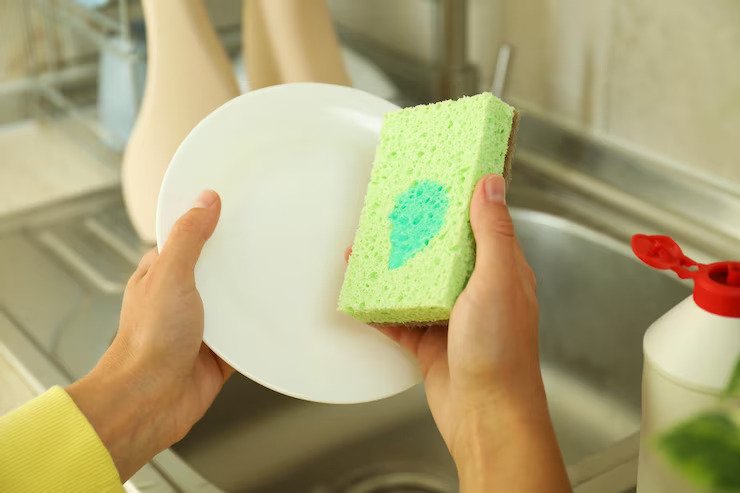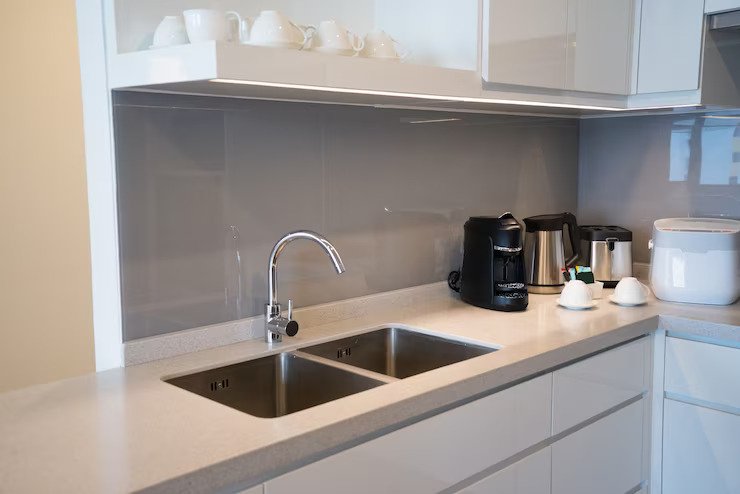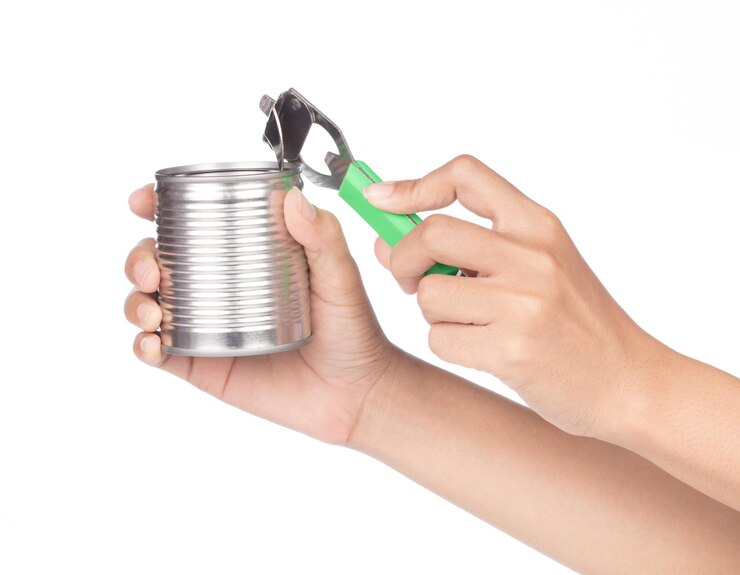The 10 Germiest Items In Your Kitchen And How To Clean Them

How clean is your home? Many homeowners are 100% sure that their homes cannot be any cleaner because they spend lots of time cleaning their domestic interiors.
However, here’s a secret you probably don’t know – your home is not as clean as you think. Don’t panic. It is not your fault that you forget to clean some areas around your home. You are not the only one.
Regrettably, despite spending endless hours cleaning, numerous areas and objects in your residence still thrive with germs by the end of the day. Wondering where these bacteria are lurking? Continue reading to uncover the items in your home that harbour the most bacteria. Be warned: the most disgusting things in your abode might shock you. And, if you’re keen to get your space immaculate, you’ll find cleaning tips you wish you had known earlier.
1. Kitchen sponges

How often do you clean your kitchen sponges, and how often do you change them? Sponges are a breeding ground for different germs and bacteria in your kitchen. Think about how much dirt, grime, and food you remove from your cookware and kitchen surfaces using your sponges daily.
It’s a lot, right?! Kitchen sponges are an attractive environment for germs and bacteria because no matter how hard you clean them with your dish-washing detergent, you still cannot remove all the food particles and dirt from them. Kitchen sponges are designed to trap the dirt inside of them, and this is the reason why you should change them regularly.
The cure – you can use some special dish soap or antibacterial sponges to reduce the bacteria. You can also soak them in bleach and water for about 5 minutes to disinfect them. The last procedure you should do at least once a week. However, the best solution is to change your kitchen sponge with a new one at least once every two weeks; this depends on how often you use it and how much dirt you remove with it.
2. Appliance handles and knobs
Have you ever thought about how dirty appliance handles are? That’s another question you need to ask yourself. Appliance handles, knobs and buttons are other areas in your kitchen that you probably often forget to clean, or you do it only when they’ve attracted so much dirt that you see it.
Look closely at your microwave, oven, fridge, and kitchen cabinet handles; you will see all the build-up grime. Professional house cleaners recommend using some good disinfectant frequently to reduce the germs in these often neglected items. Clean them before and after you prepare the food for your family. You can purchase antibacterial wipes and place them near these surfaces to remind yourself that they need cleaning.
3. Chopping boards
Chopping boards are another surface that many people forget to clean. According to a survey, chopping boards (especially those made of wood) are in the top 3 of the germiest areas in a home. They attract as much bacteria and germs as your floors.
After using the chopping board, clean it thoroughly with hot soapy water and a scrub brush. Rinse it well and dry it with a clean cloth. This will help to remove any food debris and prevent the growth of bacteria. To further reduce the risk of germs, sanitise the board by spraying it with a mix of white vinegar and water. Let the solution sit on the board for a few minutes, then rinse it with water and dry the board with a clean cloth.
You must oil wooden chopping boards regularly to prevent them from drying out and cracking. Apply food-grade mineral oil to the board once a month or as needed. The oil will penetrate the wood and help to prevent bacteria from getting into any cracks or crevices in the board.
Always use different chopping boards for different types of food to prevent cross-contamination. For example, use one board for raw meat and another for vegetables.
4. Kitchen sink

The sink in your kitchen is one of the germiest areas in the kitchen because it’s a wet environment that is frequently exposed to food particles and moisture. Unfortunately, this creates the perfect breeding ground for bacteria. Some of the harmful bacteria that can be found in kitchen sinks include E. coli and salmonella.
Cleaning the sink regularly with hot soapy water and sanitising it with equal parts vinegar and water will keep these bacteria from growing. You should also avoid leaving dirty dishes and food debris in the sink for an extended period of time.
5. Dish towels
We all use dish towels to wipe down surfaces and clean up spills, but they can also harbour bacteria. That’s because they are often damp and can provide a moist environment for growing bacteria. Some of the harmful bacteria that can be found on dish towels include E. coli and salmonella.
Replace dish towels regularly and wash them at high temperatures to prevent germs from growing and spreading. You should also avoid using the same towel for cleaning different surfaces and ensure the towel is completely dry before using it again.
6. Kitchen Countertops
Counters are one of the most frequently used areas in any kitchen and, therefore, can be a breeding ground for harmful bacteria such as salmonella and E. coli. These germs can come from various sources like raw meat, fruits, vegetables, and your hands. Therefore, cleaning your kitchen counters regularly with hot soapy water is essential to remove any dirt or grime, and then sanitise them with a disinfectant to kill any remaining bacteria. You can use a mixture of water and vinegar as a natural and effective disinfectant.
Additionally, make sure to clean up any spills or food debris immediately to prevent bacteria growth. Regularly cleaning and sanitising your kitchen counters can ensure that your kitchen remains a safe and healthy environment for cooking and preparing food.
7. Can openers

Can openers are often overlooked when it comes to cleaning because people assume that the blades are doing the cleaning as they cut through the metal lid of the can? However, the blade can also harbour bacteria from the food it comes in contact with, especially if you don’t clean the can opener regularly.
After using it, always clean the blade and gears with hot soapy water. You can also put the can opener in the dishwasher – it will clean and sanitise it.
8. Coffee machines
Coffee makers are also a common breeding ground for germs because they are often used daily but are not cleaned as often as they should be. As a result, coffee makers can develop mould and bacteria inside the water reservoir and coffee pot if not cleaned properly.
It’s best to clean the coffee maker once a month with equal parts water and vinegar. After running the solution through the coffee maker, rinse it thoroughly with water to remove any vinegar residue.
9. Blenders
Blender gaskets are another commonly overlooked item in the kitchen. They can be difficult to clean because they are hidden between the blade assembly and the container. However, food particles and moisture can accumulate inside the gasket, creating a perfect environment for bacteria to grow.
Remove and clean the gasket after each use with hot soapy water to ensure it’s free from bacteria and mould.
10. Utensil holders

Another item often overlooked when it comes to cleaning is the utensil holder. People assume that the utensils are clean when placed in the holder. However, putting utensils back into the holder without cleaning them can transfer bacteria and other germs onto the holder’s surface. For example, you use a knife to slice a piece of bread and put it back in the utensil drawer.
Additionally, utensil holders may be near the stove or sink, where moisture and food particles can accumulate, creating an ideal environment for bacteria to thrive. If you don’t clean the holder frequently, these germs can continue to grow and potentially contaminate the utensils and the food they come into contact with. Therefore, regularly cleaning utensil holders is essential to ensure they don’t become a breeding ground for germs.
Takeaways
Keeping our homes clean and free from harmful bacteria and germs is essential. Even the smallest areas, such as kitchen sponges and appliance handles, can pose a threat to our health.
By implementing simple cleaning and disinfecting practices, like changing sponges and cleaning appliances, we can create a safe and healthy environment for ourselves and our loved ones. Remember, making a little extra effort in cleaning can make a huge difference in keeping our homes and families healthy.
Read Also:











Leave A Reply